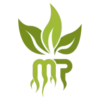Inchplants are native to Mexico, Central America, and parts of South America.
Prune inchplants regularly to encourage fuller growth and prevent legginess. Pinching back the tips of the stems will promote branching. Remove any dead or yellowing leaves to keep the plant healthy.
While inchplants are not harvested for food or flowers, regular trimming and pruning can be done to maintain the plant’s shape and encourage healthy growth. The cuttings can be used to propagate new plants.
General Prevention: Maintain good air circulation around the plant, avoid overwatering to prevent root rot, and inspect the plant regularly for signs of pests. Ensure the plant has adequate light to maintain its vibrant coloration.
